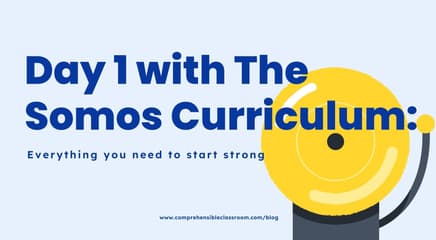Laura Terrill made another very interesting point on Saturday that affirms both my personal experience and the strategies that TPRS and CI teachers use. She said that similar concepts should never be taught together. When students reach into their brain to retrieve that piece of information, there is no guarantee that it will be the correct one because they are grouped together in the student's brain. This is why CI teachers do not teach our students grammar by giving them verb charts--we teach new structures as vocabulary, and use short pop-ups to highlight them. For example, my students know that "quería" means "wanted" even though we've not learned the imperfect tense explicitly. They know that "dije" means "I said", even though we've never gone over irregular preterite endings. I, personally, however, continue to find great value (okay, some value) in giving students verb charts after they've learned all of the pieces that fit into it separately. I am thinking right now of one student (and he is absolutely the exception, not the rule) who was completely struggling to put together logical sentences because his verbs were a total mess. When I gave them the -AR verb chart last week, a switch flipped and he is KILLING it now! I am amazed at how well he is doing! All that he needed was a formula (subtract ending add new ending), and so I continue to provide that formula for the few students that really do benefit from it. For everyone else, it's an organizational tool. When I asked Laura about this practice, she agreed that it is best practice as long as the students are the ones that fill in the chart. Let them give ME the information that goes in it. I have a lot of grammar notes posted on this site, and when it comes time to fill in the verb charts on them, I do ask my students to give me the information (ex: "What letter at the end of a verb tells us that "I" am the one doing it?"). It is nice to be affirmed!! Another example of my experience that affirms this assertion is opens/closes. My students are always switching the two (even though it seems obvious to me--cierra starts with a 'c' like closes) because we learned them at the same time AND the gesture was similar. In fact, I wrote about that in the official reflection for my evaluative observation! Some other things that should not be taught together are saber/conocer and ser/estar. Teach the verbs at separate times, and then ask students to explain to you the difference. This affirms what she and other brilliant minds have said many times in many different ways--there are two ways to come to know things: making intellectual sense of it or making meaning of it. Making intellectual sense (knowing the rules, the facts, the charts) results in 20 percent retention, while making meaning of something allows for up to 90 percent retention. WOWZA! Therefore, we must teach what language means, not how it works. Furthermore, we must always ensure that our students comprehend what is being read/said because they cannot retain it if they do not understand the meaning! I've been ruminating on this over the past few days as I reflected on some things that Laura said about using authentic resources as well as reading some different blog posts and articles on the same topic. My conclusion is that authentic resources are only valuable if they are comprehensible. If I want to use an authentic resource, I need to build a scaffold so that my students can understand it. Otherwise, I don't see how it helps them learn the language. They can pick out some words, interpret some images, and pat themselves on the back for getting the gist of it...but how has that helped them to further acquire the language?? I would contend that it has not. I should say that I still do some things just because they are fun, and that you will not find educational value in everything I post. Sometimes, we learn a song just because it's a fun song, even though we won't end up taking the time to decipher all of the lyrics. In those cases, though, I strive to build a lesson around the style of music, the singer, the themes, etc. so that it is not total fluff. And...sometimes I just let the fluff be fluff. We all need some fluff in our lives every now and again ;)
More from the blog
View Blog-

A Mouse Story for Back to School Night
Sep 7, 2025Discover a fun bilingual mouse folktale for Back to School Night. Engage parents, showcase storytelling, and highlight the power of language learning.
-

Day 1 with The Somos Curriculum: Everything you need to start strong
Jul 1, 2025Start Day 1 with the Somos Curriculum confidently! Get lesson plans, seating cards, syllabus templates, parent letters, rubrics, and more—all in one place.
-

Don't review: do this instead!
Oct 6, 2024Skip the traditional review! Start your language class with engaging communication activities like Card Talk and Special Person Interviews. Focus on language acquisition by tapping into students' internal systems for real growth and connection from day one.
